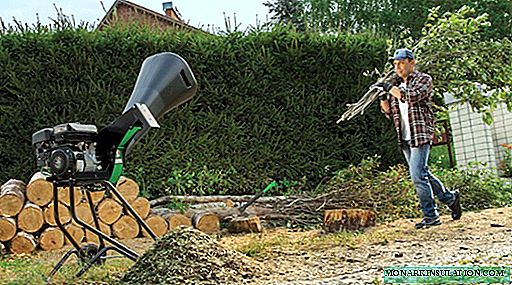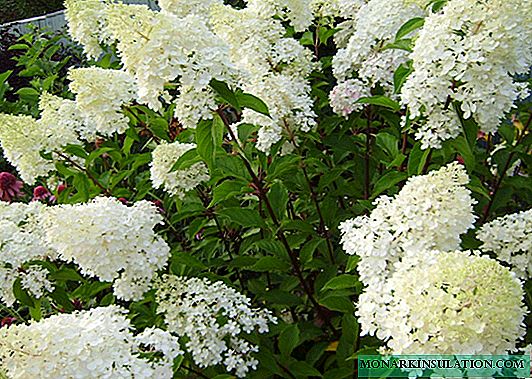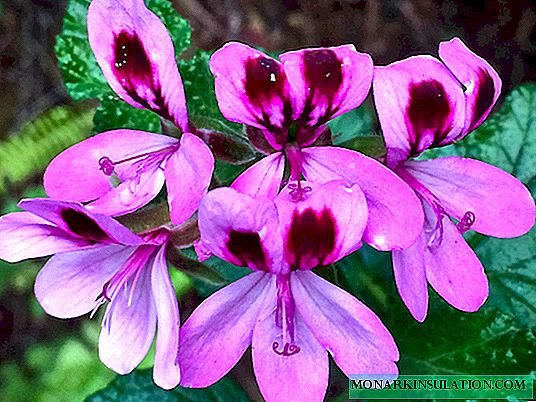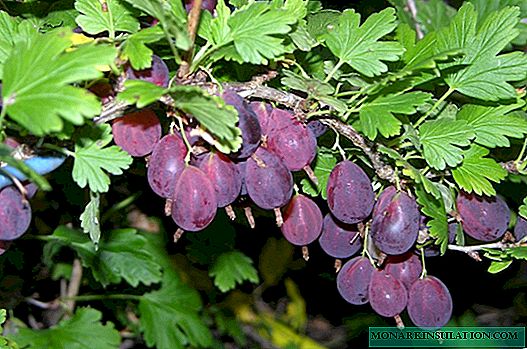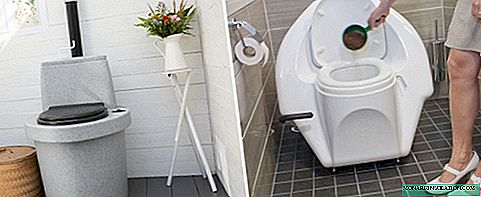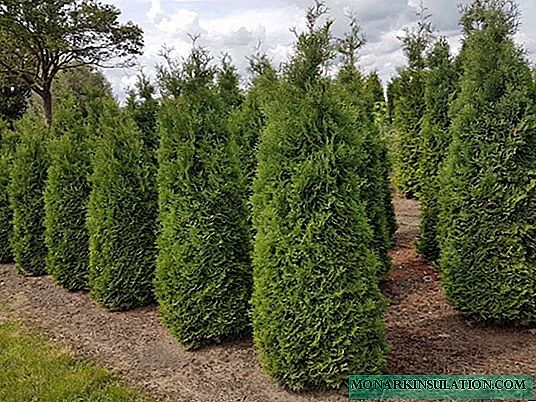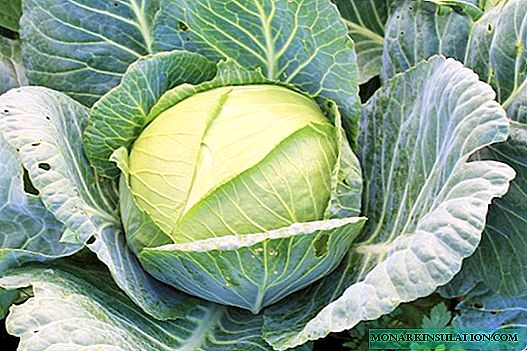
Cabbage is a vegetable, well known for a long time. It turns out that even Pythagoras himself was engaged in its selection. What can we say about our days, when science has stepped far forward in the creation of hybrids with improved characteristics. Nevertheless, there are varieties of cabbage, which for several decades have enjoyed well-deserved fame. One of them is called Glory.
Cabbage Glory and its varieties
The traditional type of cabbage is white cabbage, has long been considered a Russian national product, although it is a vegetable from the shores of the Mediterranean Sea. Cabbage is so unpretentious that even old domestic varieties compete with new hybrids and are still enjoying unprecedented success. One of them is the famous Slava variety, which has 2 varieties, no less popular than the famous "namesake". We are talking about the Glory 1305 and the Glory of the Gribovsky 231.

Cabbage Glory is a very old variety, but it is still respected.
Both varieties have a long history, because the year of inclusion in the State Register is back in 1940. These varieties are allowed to be grown in all regions of Russia. The destination is open ground, so both types of cabbage are welcome guests in the garden in private farms and on farm fields. High taste quality of both varieties and their universal use in cooking are noted. But the rest of the characteristics vary.
Glory 1305
Belongs to mid-ripening varieties, from the period of mass seedlings to the onset of technical ripeness passes from 101 to 132 days. Friendly ripening is noted. The raised leaf outlet. The leaves are medium, rounded, with a pronounced wavy edge, green or grayish-green. The surface is medium-wrinkled, covered with a weak or medium-intense wax coating. A round or flat-round firm head is medium in size and weighs from 2 to 4.5 kg. The inner poker is of medium length, the outer one is short. Productivity 570 - 930 kg / ha. The maximum yield is 1250 kg / ha. The variety is resistant to mucosal bacteriosis.

Cabbage Glory 1305 has excellent resistance to mucosal bacteriosis
Glory Gribovsky 231
Mid-season, but technical ripeness occurs 2 weeks earlier than that of Slava 1305. The final formation of the head comes on 100 - 110 days. A medium-sized compact and raised leaf rosette hides a small but strong round-headed head. Its mass is 2.2 - 4.5 kg. The leaves are rounded, medium in size with a slightly wavy edge. Painted in green or dark green. The surface of the plate is small wrinkled, covered with medium intensity wax coating. Inner poker of medium length. The commodity productivity indicator of 658 - 891 kg / ha. The maximum recorded yield of 1026 c / ha. The output of marketable products is great - 91 - 97%. The variety is unpretentious to the soil.

Cabbage Slava Gribovskaya 231 - a productive and unpretentious variety
Appearance of the Slava variety
Looks like cabbage. Glory is attractive. The raised leaf outlet. The leaves are medium sized, light green, covered with a slight waxy coating. The surface of small wrinkles, nutrient veins are well defined. The head is round (average diameter 25 cm), slightly flattened, dense. The cut has a white color. The outer stoker is shorter than the inner one. Weight ranges from 2.5 to 4.5 kg. If you believe the sources, sometimes there are 6 - 7 pound champions.

Cabbage Glory has a very attractive appearance and excellent taste.
Characteristic
Any variety differs from others in a set of characteristics. In the variety Slava it is as follows:
- the variety belongs to mid-season species - from the seed germination to the technical ripeness of the head, 100 to 130 days pass;
- shows high productivity - from 1 m2 from 10 to 12 kg of products are collected;
- well tolerates displacement over long distances, which makes Glory profitable for selling vegetables. But at the same time, the keeping performance is average - up to 3 months (maximum until January);
- It has excellent taste. Juicy, crisp cabbage - a great ingredient in vitamin salad;
- in cooking it is used as a universal product. But according to the hostesses, Glory is the best grade for pickling.

Cabbage Glory is unusually good in pickled form
Advantages and disadvantages
White cabbage Slava fully justifies its proud name, because it has a lot of advantages:
- resistant to temperature extremes - cold and heat resistant;
- Despite the genetically embedded love of moisture, it is able to tolerate dry periods;
- has good immunity, highly resistant to mucosal bacteriosis;
- due to its high sugar content (up to 10%) it has an excellent taste;
- heads of cabbage do not crack;
- has excellent commercial qualities and appearance;
- the plant is not prone to a large formation of peduncles.
But, unfortunately, there are also disadvantages. However, they appear with short care:
- loose head is formed with a lack of light and overfeeding with mineral fertilizers;
- in case of non-observance of the rules of agricultural technology, Glory can be affected by cabbage keel, vascular bacteriosis and is subjected to fusarium wilt.
Features of planting and growing
Cabbage planting Slava is carried out by two traditional methods - seedling and seed. We will consider each of them separately.
Seedling method
This method is popular, despite the fact that it is time-consuming. Mainly grow cabbage through seedlings gardeners in the regions of risky farming try, but do not neglect it in the southern regions.
Seedling method, in the opinion of many gardeners, is more reliable. It allows you to:
- save seed material;
- receive an early and guaranteed harvest;
- do not thin out seedlings.
Before planting, be sure to sort the seeds. Do not spare it and leave only large ones, from the little things there will still be no sense. The next step is seed preparation.
- For 15 to 20 minutes, the seed is soaked in hot water (approximately 50 ° C), then for 1 to 2 minutes it is lowered into cold water. This procedure will disinfect the seeds.
- The next 12 hours, the seeds should be held in a nutrient solution. It is prepared from 1 liter of water and 1 g of potassium humate. After washing under running water, the seed material is dried to a state of flowability.
- For hardening, the processed seeds are placed for a day in the refrigerator, on the lowest shelf, where the temperature is within 2 ° C.

Sort cabbage seeds before planting, leaving the largest
All procedures with seeds are easy to do if you place them in a special bag made of cotton or gauze. Personally, in such cases I use a gift bag made of organza on which there is no print.
The time for planting Glory seeds for seedlings is the first of April. Choose a more accurate date based on the weather conditions in your area. For example, in the south you can sow seeds from March 25. Seedlings should be planted in a permanent place at the age of 30 days, if she has 4 to 5 leaves.
What you need to grow seedlings at home
Cabbage Slava does not really like picking, so it is advisable to prepare separate containers for growing seedlings. Peat tablets are the best option to stay on - there is no need to mess around with the soil mixture (but the tablets dry quickly, this should be taken into account).

If you are not going to dive, then the seeds of cabbage are best sown in peat tablets
Although picking has its advantages. It is necessary if seedlings already need to be planted in the ground, and weather conditions do not allow this. The cabbage seedlings that have undergone the picking procedure slow down growth, become more squat, with a strong stalk.
Pros and cons of picking - video
The soil mixture for seedlings needs loose, nutritious, well-permeable air and water. If you decide to take the land from the garden beds, then you run the risk of getting weak and sick seedlings, since in this soil the amount of nutrients decreases, and pathogens accumulate. For sowing seeds, try to prepare a mixture consisting of turf soil and rotted humus, taken in equal proportions. To add looseness, add sand (but not fine). A good ingredient is wood ash, which will be an excellent prevention of the black leg.
It is advisable to disinfect the earth mixture in any way possible - fry in an oven or spill with a weak solution of potassium permanganate. After this, the soil can be filled in prepared containers - boxes for seedlings, individual cups, peat pots.

To disinfect the soil mixture, it is enough to spill it with a weak solution of potassium permanganate
- Moisten the earth mixture in drawers. Make grooves with a depth of no more than 2 cm. Seeds are laid out every 1.5 - 2 cm. The distance between the grooves is 4 cm. Sprinkle a thin layer of soil on top.
- If you prepared a separate container, then sow 2 to 3 seeds in it, shallowly planting them in the soil.
- Place the seed container in a well-lit place. To maintain the desired germination temperature of 18 - 20 ° C, cover the container with glass or a transparent film. Do not forget to ventilate so that condensation does not collect, which can provoke excessive humidity.

To maintain the temperature necessary for seed germination, put a transparent bag on the container
Growing seedlings in a greenhouse
The greenhouse is a great opportunity to unload window sills. The constant temperature allows you to grow seedlings in comfortable conditions.
Treated seeds are sown at the same time as for home cultivation. The land is prepared in advance, preferably in the fall. Be sure to remove all plant debris - in a greenhouse, diseases develop in them that become the main threat to seedlings. For digging, add rotted manure (3 buckets per 1 m²) and fertilizers containing nutrients necessary for cabbage:
- nitrogen;
- potassium;
- phosphorus;
- magnesium.
In a greenhouse, it is important to maintain normal not only temperature but also humidity. With its increase, seedlings are often bent, but the most dangerous for tender plants is fungal infections, which develop very quickly in warmth and humidity. To avoid this trouble, aerate the shelter in the daytime on the leeward side and observe the watering regime.

Greenhouse - a great place to grow cabbage seedlings
Seedling Care
Processed cabbage seeds germinate very quickly. Literally after 3 to 4 days, the first shoots appear, but do not be alarmed if they did not sprout during this time. Sometimes seeds can sit in the ground for a whole week. In order for the plants to develop strong and healthy, they need a special care regimen.
- Moving the seedling container to a cooler place will help to avoid excessive stretching of the seedlings. The temperature during the day should not exceed 16 ° C, and at night - 8 - 10 ° C. In such conditions, keep the seedlings for a week.
- If you grow seedlings in a common container, then pick, carry out when the seedlings are 10-14 days old (phase of expanded cotyledons and first leaf). Some sources indicate that during the procedure, the tip of the root should be pinched. But experienced gardeners do not. After the procedure, keep the seedlings for 3 days in comfortable conditions - a bright room with a temperature of up to 18 ° C. Gradually, bring the indicators to 13 - 14 ° C during the day and 10 - 12 ° C at night.
- If seedlings develop in separate cups, then after the appearance of 2 - 3 true leaves, select the strongest seedling. Pinch the rest under the root.
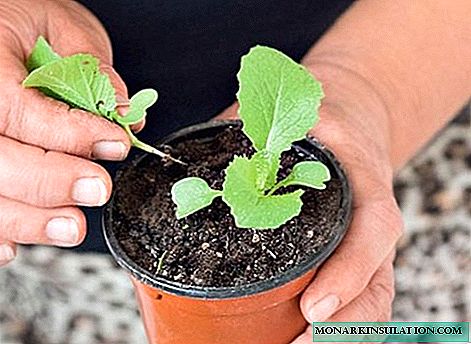
For further cultivation, you need to leave the strongest seedling
- For seedlings, maximum lighting is important for growth. If there is not enough light, the seedlings are pulled into a string. To avoid this, additional illumination with a fluorescent lamp for 12 hours will help.
- Equally important is the normal moisture content of the substrate. Before seedlings appear, carry out humidification from the spray gun. When the seedlings appeared - spill between the grooves so that water does not fall on the seedlings. The soil should be moderately moist. If you have flooded the soil too much, then dry sand will help you, which must be scattered between the grooves. Overdrying or waterlogging will ruin the tender shoots. If you stand the seedlings in a cool place, then you can water 1 time in 5 to 7 days.
- Start feeding seedlings at the age of a week or 10 days. To do this, use organic matter or a solution of ammonium nitrate, granular superphosphate (20 g each) and potassium chloride (5 - 10 g) per bucket of water. After 10 - 12 days, spend the second top dressing, after 2 weeks or 20 days - the third.
Planting seedlings in the ground
1.5 to 2 weeks before planting, seedlings must be hardened. Keeping seedlings at low temperatures prepares them for open ground conditions, but this is not enough. Begin by airing the room, then take the seedlings out into the air. Do it the first time in the afternoon, preferably on a sunny day. Increase your time on the street.
Ready for new conditions seedlings should be strong, 15 cm high and have 5 - 6 leaves. At least 2 hours before transplanting, young plants need to be well watered so that the earthen clod holds on tight.

Hardened seedlings with 5 to 6 leaves are ready for transplanting to an open bed.
Thanks to its good cold resistance, Glory can be planted in open ground when the daytime temperature stably stays within 8 - 10 ° С. In order not to thicken the landing, you should adhere to the following scheme:
- between plants - 50 - 60 cm;
- between rows - 60 cm.
In cold regions, seedlings are best planted first under cover material.
Prepare the soil in advance. The whole process is the same as when growing in a greenhouse.
- Schedule rows in due time using pegs and rope. At a specified distance from each other, dig holes that will freely accommodate the root system of seedlings.
- Pour 1 teaspoon into each hole. urea and 2 tbsp. l superphosphate. Thoroughly mix the fertilizer with the ground.
- Then pour enough water to make a creamy mass in the recess. In it and plant young cabbage. Press the landing lightly with your hand to tighten.
- Then sprinkle the hole with dry soil to prevent quick drying of the soil.
While the seedlings take root, watering is often carried out - after 2 to 3 days.
Planting cabbage seedlings in the ground - video
Growing in the seedless way
This method is most often practiced in the southern regions. The sowing campaign is carried out from mid-April to May. The main thing is that during this period the air temperature does not fall below 4 - 6 ° C. Ideally, the temperature should be within 10 ° C. If weather forecasters warn of possible cooling, cover the beds with agrofibre seeds.
Choose a well-lit area for sowing seeds and further cultivating the Slava variety, since cabbage is a young lady who loves light. Even the slightest shading is undesirable. To develop a full-fledged crop, cabbage should receive lighting for 13 hours. Of the soils, loam is preferred, which contains a large proportion of humus.

Good lighting is important for cabbage
It is very important that the soil has a neutral acidity. Otherwise, cabbage will hurt and yield will be minimal. To reduce acidity, you can use wood ash, which also fertilizes the soil.
Choose the areas where before this grew:
- dahlias;
- lawn grass;
- potatoes;
- legumes;
- cucumbers
- Tomatoes
It is undesirable to plant cabbage in the same place twice. The soil should rest from this crop for at least 3 years.To maintain such conditions in small areas is problematic, therefore it is very useful to practice joint planting or to plant Glory immediately after harvesting the first greens - lettuce, green onions.
They dig the soil in the fall, introducing the required nutrients. Digging the ground is a must! In clogged, unsaturated soil, heads of cabbage will not develop properly.
Step-by-step landing process
- Align the site with a rake, smash the clods of earth.
- Mark the beds with a rope and pegs driven along the edges. Dig a shallow groove with your hoe. Their depth should not exceed 2 cm.
- Spill the grooves with warm water.
- If the seeds have been presoaked and slightly hatching, lay them every 50-60 cm.
- Sow dry seeds denser, given the fact that not all of them will germinate. Then thinning should be carried out, removing the weakest plants from the garden.
- Sprinkle the planted seeds on top with dry earth and gently press with your palm.

Cabbage seeds close up in the soil shallow
I do not always throw away weak plants; I give them a second chance. Before thinning, I water the garden well, then dig a frail seedling and plant it in a separate container. I return the already-grown plant to the garden. I can’t say that I save all the plants in this way, but many of them eventually rejoice with the crop.
Further care
Cabbage Glory, like all members of the family, is very hygrophilous. Therefore, the soil on the beds should always be moderately moist. Frequency of watering in different regions is often different. Before the next hydration usually takes 8 to 10 days. But atmospheric precipitation should be taken into account, because if you water it after rain, then oxygen will cease to flow to the roots due to waterlogging. In arid regions, on the contrary, when watering is insufficient, the plant withers, if the head of cabbage grows, the vegetable will not be juicy, but rather dry.

Cabbage loves moisture, but does not tolerate waterlogging and drought
Water the cabbage with water, the temperature of which is not lower than that of air. The evening procedure is preferable if you pour the vegetable in the heat, moisture will even more warm the soil, and the roots will get a steam burn. If you water in the morning, then if possible do it several hours before the onset of heat.
For mid-ripening varieties, which include the cabbage Slava, watering during the period of mass growth of leaves and the formation of head of cabbage is especially important. The rate of water consumption per 1 m² - 15 - 20 liters.
They feed seedlings in the same way as seedlings. During the formation of the head of cabbage, a solution of mullein is useful - 1 liter per bucket of water, 50 g of ash can be added to it. The amount of the mixture is enough for 5 to 6 bushes. With the same solution, you can pour the cabbage in 3 to 4 weeks. Top dressing should be applied only to well-moistened soil.
Do not forget about such useful rules for caring for a vegetable as loosening row spacing, grass control and mulching of plantings.

Organics - a great way to feed cabbage
Diseases and Pests
Any problem is easier to prevent than to deal with it later. Therefore, prevention is the key to a decent harvest.
Strongly smelling plants save cabbage from pests. The marigolds or petunia planted along the edges of the garden and in the middle of it, not only decorate the planting, but also scare away the cabbage fly, scoop, and butterfly. Slugs are very afraid of tobacco dust - it can be scattered on the ground around plants.

Marigolds not only decorate cabbage, but also protect it from pests
Variety Slava has good immunity, but thickened plantings, excessive watering and excessive feeding can play against the rules. And then the disease will not take long. To prevent this from happening, spend dusting with ash at the seedling stage. And before planting on the garden bed, you need to treat the plants with a 1% solution of Bordeaux fluid.
If the cabbage is still sick, then collect and destroy the affected leaves, and after harvesting, remove the cabbage residues from the bed. As a fight against the disease, use the following drugs:
- from the black leg - Bactofit, Planriz, Fitoflavin;
- from root rot - Rizoplan;
- from downy mildew - Topaz;
- from vascular bacteriosis - Planriz, Trichodermin.
Harvesting and storage
The vegetable reaches technical ripeness by the end of July. 2 weeks before the cabbage harvest Glory stop watering so as not to provoke cracking of heads of cabbage. Harvesting in large areas can take a couple of weeks.
A strong head of cabbage is cut with a sharp knife and left to dry in the shade. Then carefully inspect and remove the damaged leaves. Sorted whole and strong heads of cabbage are stacked with a low pyramid on a wooden shelf or stacked in boxes with a stump up in the storage place. A dry basement with good ventilation is perfect for this purpose. Optimum indicators of temperature (0 ° С) and humidity (90%) allow the crop to be stored until mid-winter. In villages, the hanging method is still common. To do this, they dig out the cabbage along with the root and hang it by the poker.
Variety Slava is unusually good in fermented form. Therefore, if the amount of cabbage allows, leaven part of the crop and you will get a healthy product in the winter.

No matter how you store the cabbage, it should be checked periodically, removing rotten leaves
Reviews about cabbage Glory
And I have the glory every year without fail. To salting ... only GLORY!
Emmma
//forum.tvoysad.ru/viewtopic.php?t=423&start=375
I sowed cabbage "Glory" on May 20 in order to collect it in October and pickle it. Last year it turned out - I collected normal cabbage in October, and this year, I think, I will not collect anything, the cabbage is in the hole, although it has been mercilessly processed all season. Only 2 heads of cabbage stand clean, which stood in the dill thickets all summer.
Zoya
//forum.prihoz.ru/viewtopic.php?t=6637&start=615
I have very good cabbage grown this year. Glory and Gift. Interestingly, there were no caterpillars, although I do not use any chemistry at all, and in the past years I devoured it all — I did not have time to collect them.
Niki
//dv0r.ru/forum/index.php?topic=618.50
I have a purely consumer question: we decided to take a couple of cabbage for cabbage pickling. Loved the grade of Glory. But here's a bad luck - you can rarely find it on sale in stores and markets of Krasnodar
Oleg Borisovich
//kmory.ru/viewtopic.php?t=3992&start=30
For myself, I decided on the skeleton of varieties, from the early 10-15 planting Starts are planted. From the middle, the basis is the tested and well-cultivated Slava variety, planted also such varieties as Incomparable, Pobeda, Pudova, the latter not reaching the pond, but for 10 kg. exceeded. Of the late varieties, and which are still being stored, I plant Kharkov, Snegurochka, Everest.
pioneer 2
//forum.vinograd.info/showthread.php?p=116757
Cabbage Slava, perhaps the most well-deserved variety in Russia, is unpretentious, easily grown in seedlings and seeds, and produces excellent crops. For these characteristics, Glory is still respected and cultivated. Another advantage of the variety is its wonderful taste. And according to the hostesses, Glory is the undoubted leader among the varieties of cabbage for pickling.


